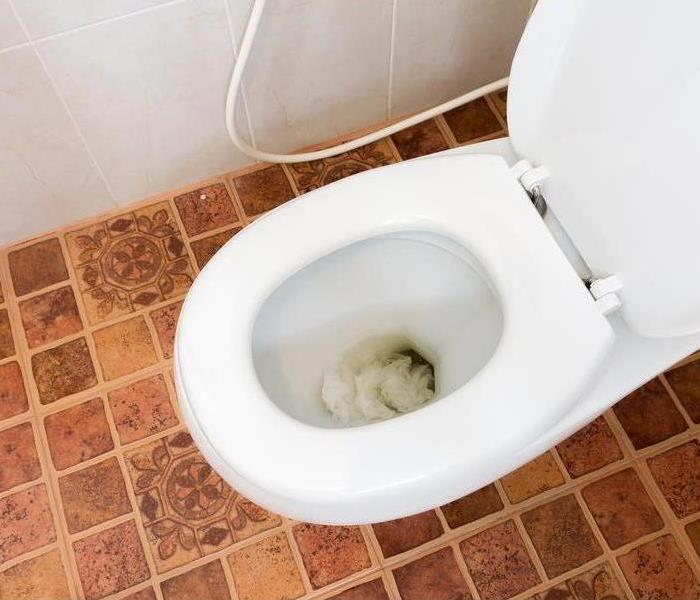What to do when your toilet overflows
2/5/2023 (Permalink)
If your toilet overflows, it doesn't mean that you're going to have to buy a new one. There are ways to deal with this common plumbing problem, and they're easier than you might think.
Shut off the Water
At the first sign of water damage, shut off the water supply to the toilet. Turn off the main water valve that feeds your home, which can be found in your basement or crawl space. Shut off the water supply to the toilet at either its valve or tank, depending on which you find more convenient (if there's a valve for both).
If there's no way to shut off your toilet's water tank (or if turning it feels too dangerous), turn off a faucet nearby and fill up as many buckets as you need with clean water. Now use these for flushing purposes only. If possible, have someone do this so that both of you don't have to deal with any messes from overflowing toilets.
Turn off the feed valve to the overflow pipe
An overflow is one of the more common plumbing problems that you’re likely to encounter. While it may seem like a serious issue, you can usually handle a toilet overflow quickly and easily.
Once the water is turned off, next you want to turn off the water supply to the toilet. Turn off the feed valve to the overflow pipe and use a bucket or plunger to suck up all the water from the bowl, then empty it when you're done. This will help prevent water from overflowing into the floor causing more water damage.
Use towels on the floor to absorb water and prevent damage
If there is water puddles on the floor use old towels to absorb water and prevent damage. Use enough towels to soak up the excess water and protect your flooring. Don't leave the wet towels on the floor as it could cause more problems down the road. Keep the area free of debris to prevent slip and fall.
If you have a bathroom with tile floors, place the towels on top of each other, overlapping them slightly along their edges so that there are still gaps between them where water can drain through. Put them in a pattern around the overflow hole in your toilet bowl so that fluids that seep through can be caught by one of the layers of towels. This will help keep your floors dry even if there is still more water coming out of your pipes after you flush.
Bucket or plunger to suck up all the water from the bowl
Once the water is off the floor, use a bucket or plunger to suck up all the water from the bowl. This is probably your best option if you don't want to deal with a full toilet. Remove all the water from the bowl incase the toilet has to be replaced.
If your toilet has been overused or if there's been an increase in household traffic (such as company staying over), then try flushing less often until things return to normal. This will help prevent future overflows due to excessive use of your water supply system's capacity during peak times.
Use a Professional
If you're unsure about the problem, or if it seems like a more serious issue than your average clog, consider calling a plumber. A plumber can visit your home and assess the situation to determine whether it's something you can fix yourself (and what caused it in the first place). If so, they'll be able to teach you how to prevent future problems with your toilet.
When you are in need of a restoration company for your water damage, give SERVPRO of Oakville/Mehlville a call at the first sign of damage.





 24/7 Emergency Service
24/7 Emergency Service
